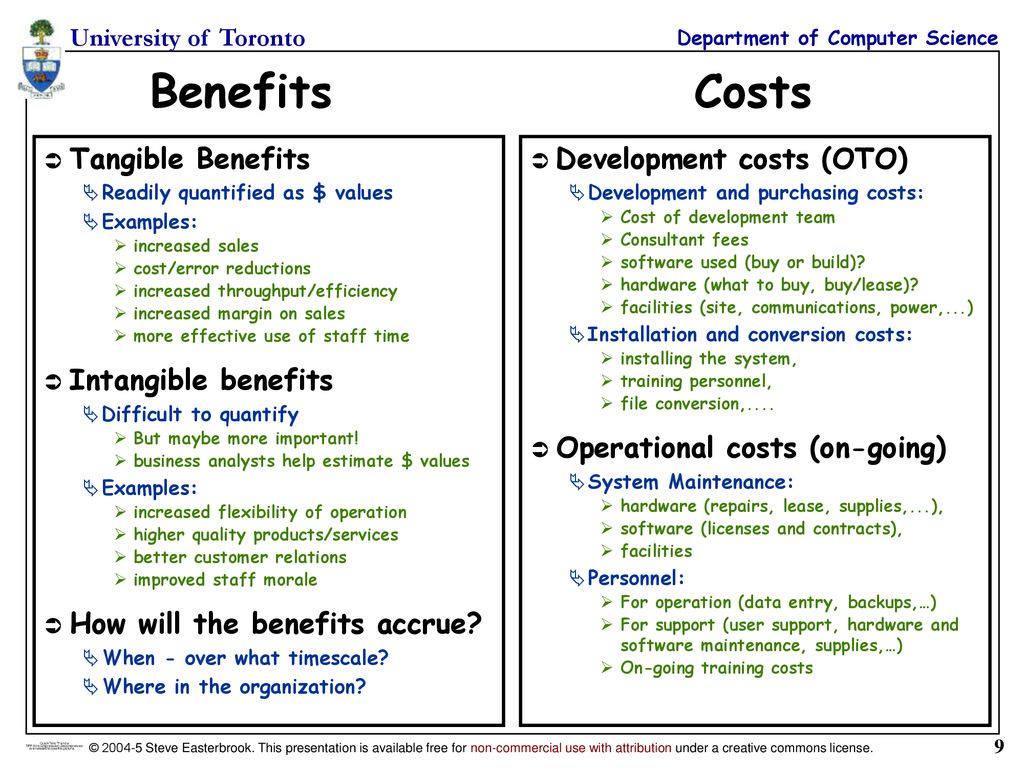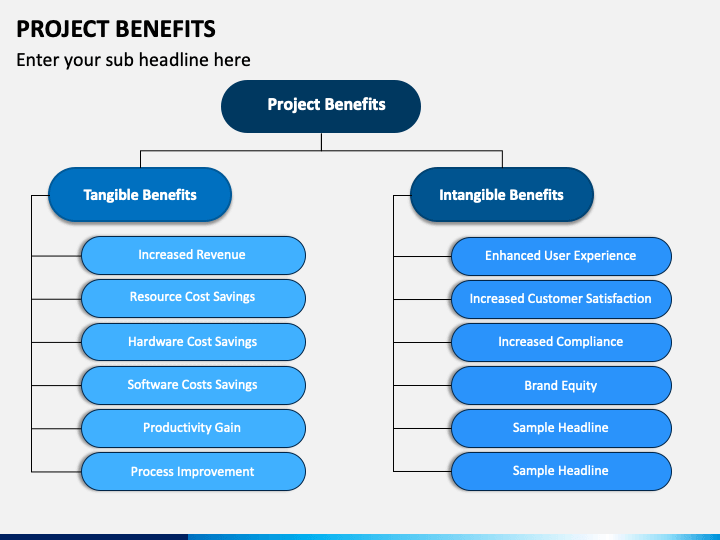
The most efficient means of justifying your costs is to try to show a clear Return on Investment (ROI) for your project. If you're the one who initiated the idea for the project, you may have to justify the project even before you know the costs.

No matter who initiated the project, sooner or later you're going to have to defend the costs. Jaffe, in IT Manager's Handbook (Third Edition), 2012 Justifying the Costs Visibly working in partnership with the organisations that have the bargaining power in the workplace, and primarily the trade unions, could bring greater understanding of the difference in their respective roles.īill Holtsnider, Brian D.
#Tangible benefits examples professional
The role of the professional body should be to collect the evidence and data needed for members to use in their representation. However, acceding to this view will impede the organisation in moving on a larger stage and in particular making political partnerships and leading on policy and advocacy issues. CILIP has commenced a review of its future, 4 while other international library and information associations have also investigated what members believe is at the heart of a modern professional association for the 21st century.Įarlier work by Ashcroft (2003) indicated that the CILIP membership could not envisage any issue as more important for their professional body to focus on than pay and conditions. The Professional Associations Research Network 3 in the UK has initiated a project to explore the expectations of potential members and their attitude to professional bodies. From their perspective, the critical functions include the provision of network opportunities, advocacy of their work and the provision or validation of qualifications and accreditation of educational courses. Members must believe in some tangible benefit if they are to belong to a professional body. At best, this will be achieved by persuasive arguments based upon a body of evidence that is centrally maintained and updated. The organisation must lead on issues that illustrate the benefit of that profession to society and communities. Society will judge the authority of an organisation by its ability to be heard, seen in print and other media, and by the influence it has with local, regional and national government. The inclusive nature of its governance will lend legitimacy and authority to public statements, whether they relate to matters of professional practice or the wider social applications of information access and use, or to legal issues of copyright, intellectual property or other statutory requirements. The adopted policies should be accessible as well as meaningful to a majority of members. This requires the organisation to have a democratic governance structure that includes member participation in policy formulation and implementation. Taking a stance on advocacy includes representing professional self-interest. This is in contrast to the position that can be taken by a trade union, where members can expect personal advocacy and workplace representation. A professional body is bound to safeguard public interest and thus will advocate the best result for society or the community. The Wirral case ( McKee, 2009) serves as an example of advocacy.

The bottom line is that in most cases, cloud storage can save money and a lot of effort.īiddy Fisher, in Libraries and Society, 2011 Advocacy, leadership and representation

The database is accessible from anywhere the Internet is available. The company using the cloud has fixed, predictable expenses for database maintenance that are negotiated up front.
#Tangible benefits examples software
(Responsibility for application software that interacts with the DBMS may be the responsibility of the owner of the data or application development may be included in cloud service package.) ■ The cloud service provider may also be responsible for upgrading the DBMS. If new/larger/faster hardware is needed, the cloud service provider purchases and installs the replacement hardware. This can significantly reduce the cost of supporting the database, not only because the data owner does not need to purchase hardware and software, but because it does not need to hire staff members or consultants who can maintain the database environment. That becomes the responsibility of the cloud service provider. The owner of the data does not need to maintain database hardware or a DBMS. There are some tangible benefits of moving a database to the cloud: ■


 0 kommentar(er)
0 kommentar(er)
